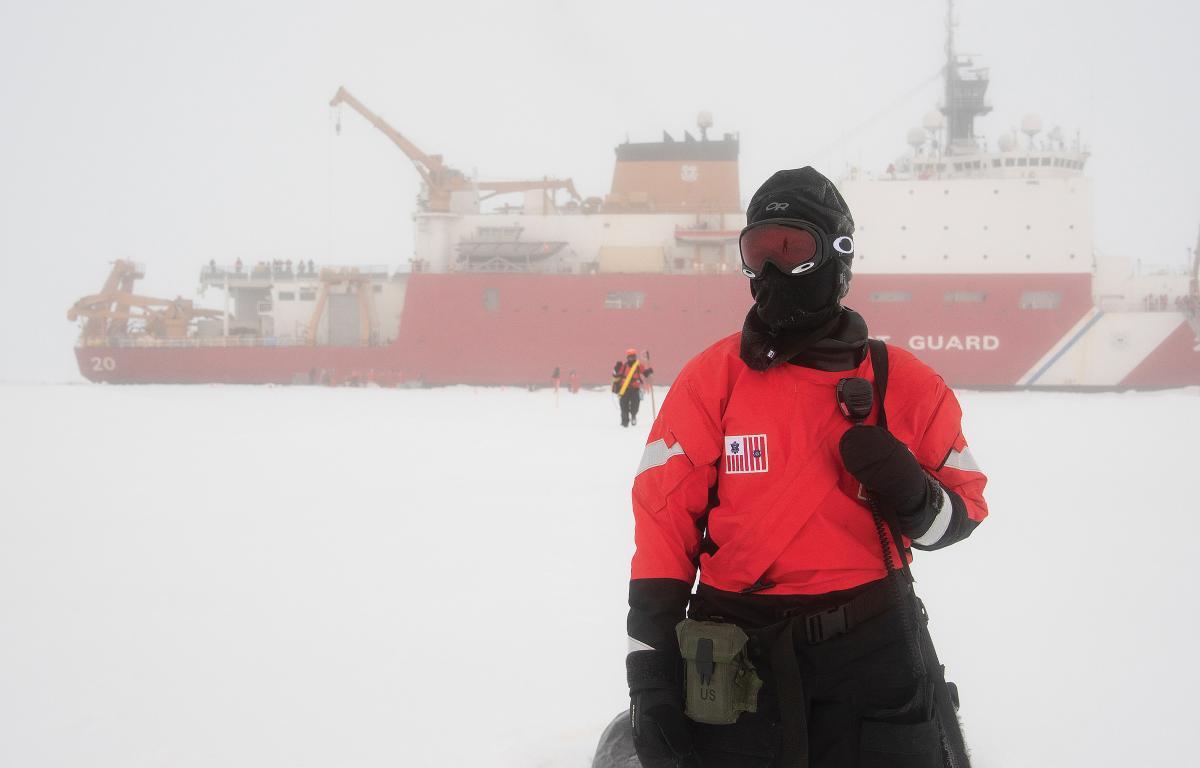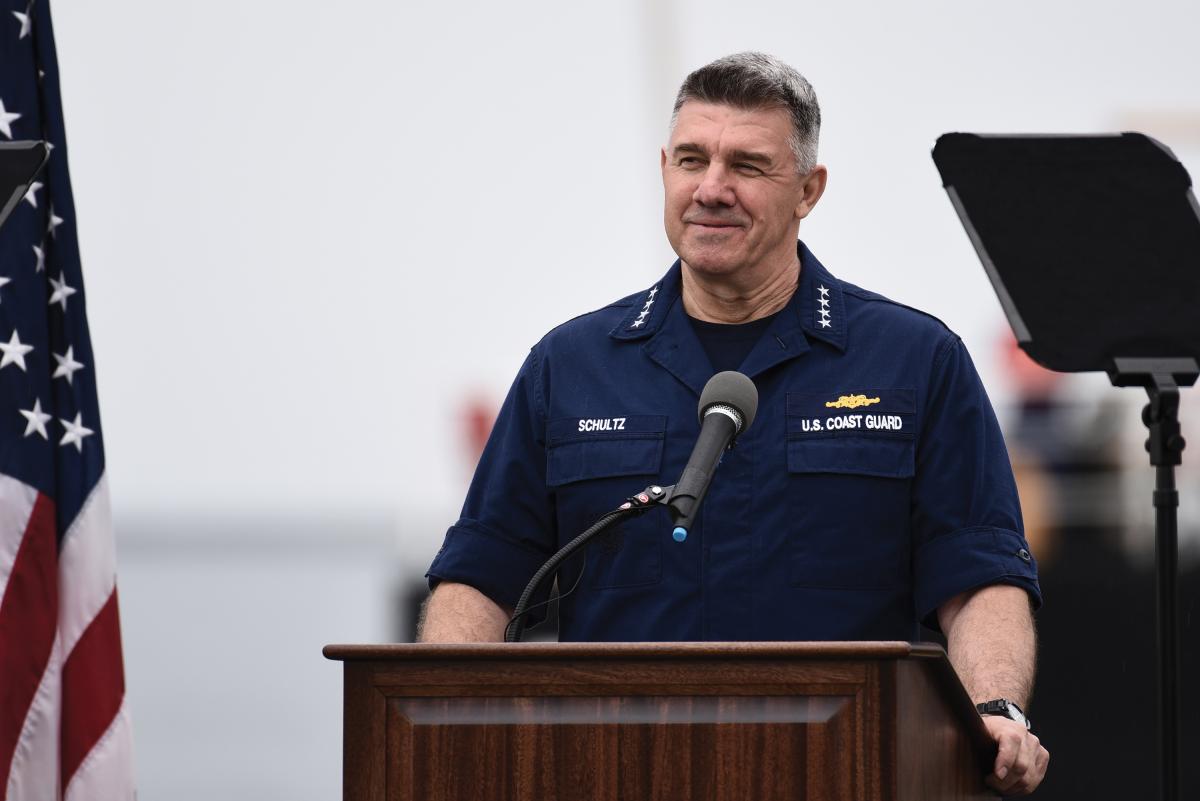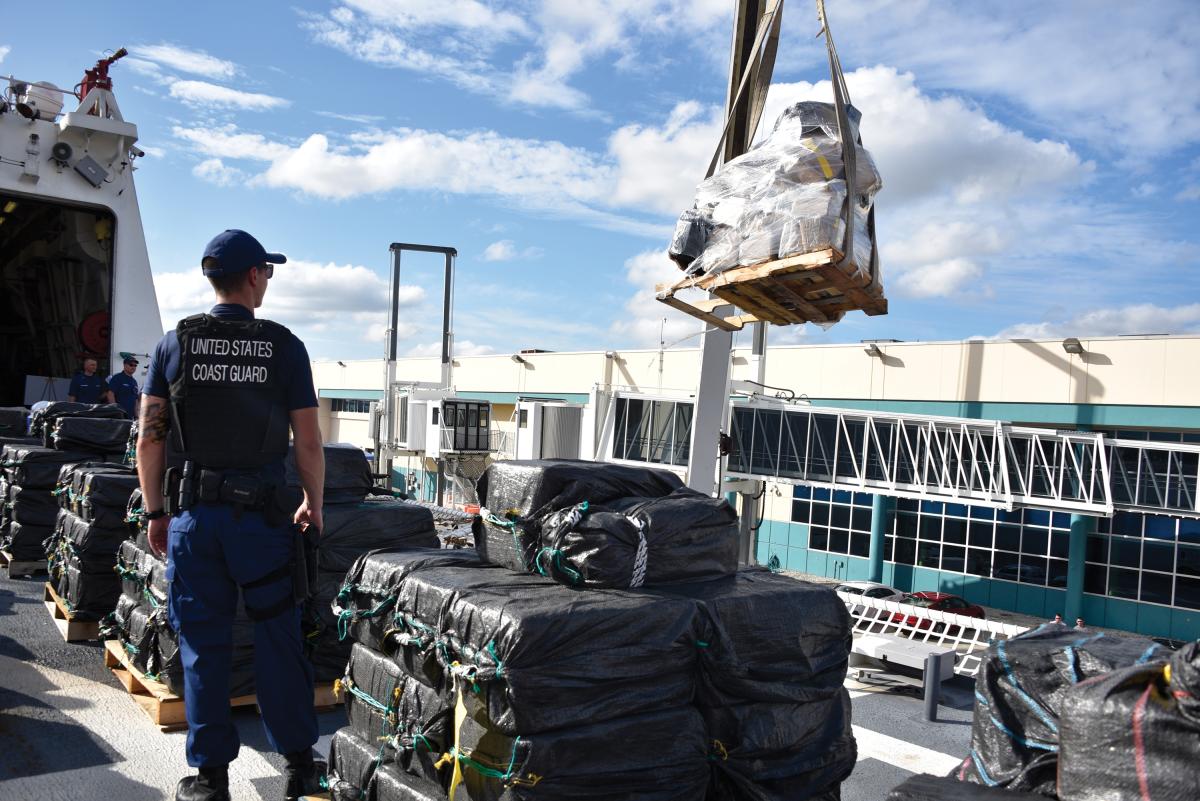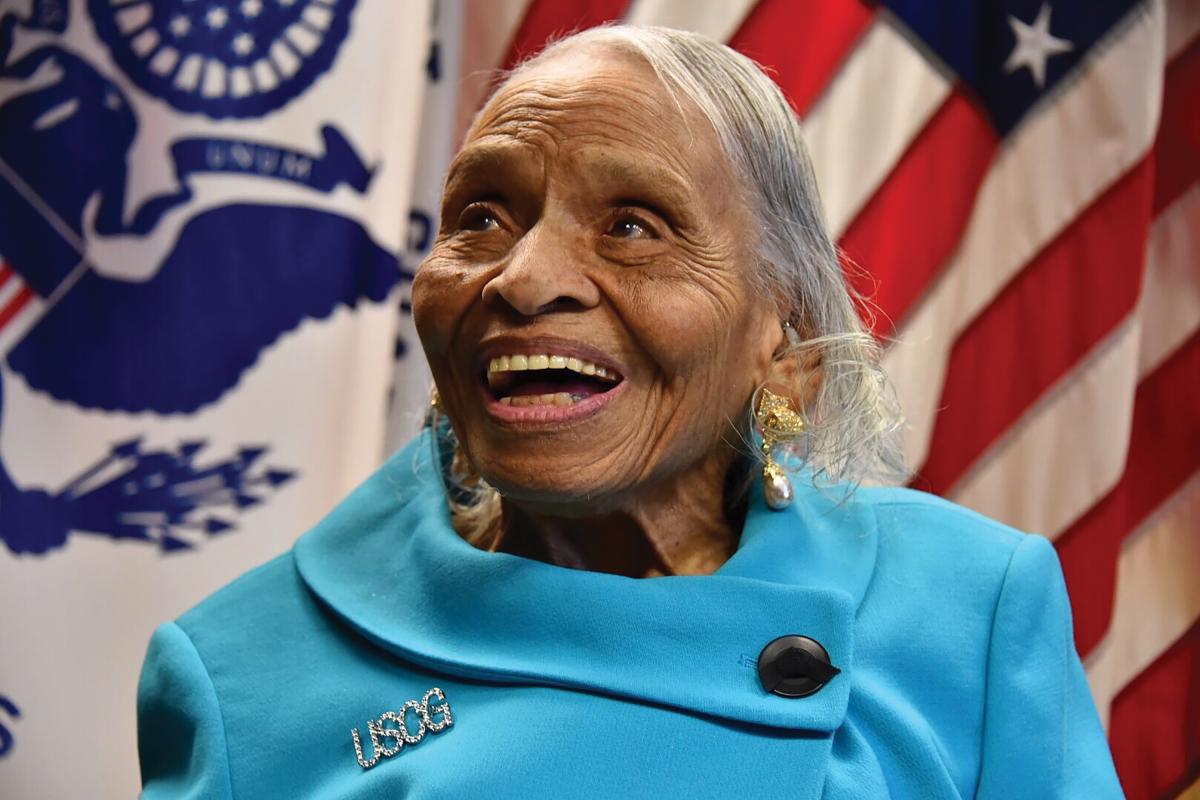The past year has been one of the busiest in Coast Guard history. Admiral Karl Schultz was sworn in as the 26th Commandant; the service broke records in mission accomplishment, especially with drug interdiction; and the research-and-development program saw two nanosatellites go into space. The service also responded to multiple hurricanes, including Florence and Michael, and commissioned new cutters to provide today’s Coast Guard men and women with significantly more capable assets.
The demand for an Arctic presence and polar capability continued to challenge the Coast Guard, as did the record 35 days from the end of December 2018 through January 2019 that the service went unfunded. During the partial government shutdown, the Coast Guard became the only branch of the U.S. armed forces in recent history to work without pay. The response and support from communities around the country, however, was unprecedented and underscores the place the Coast Guard holds in the hearts of the American public. Around the country, Chief Petty Officer Associations established food banks; businesses stepped forward with meals, gift cards, and supplies; and neighbors helped neighbors. The leadership and engagement of the Commandant and Master Chief Petty Officer of the Coast Guard during the shutdown are a model for all leaders.
New Strategic Plan
After assuming his duties as Commandant, Admiral Schultz issued the service’s strategic plan for 2018–22, which establishes a framework for future mission planning and engagement. The plan includes three key focus areas to establish a ready, relevant, and responsive Coast Guard:
- Maximize Readiness Today and Tomorrow
- Address the Nation’s Complex Maritime Challenges
- Deliver Mission Excellence Anytime, Anywhere
The plan also renews the service’s focus on Indochina and traditional national rivals:
Rival powers, such as China and Russia, are challenging rules-based international order through interstate aggression, economic coercion, maritime hybrid warfare, gray zone activities, and overreaching territorial claims. Through their actions, they are attempting to diminish American and partner-nation influence abroad. By exploiting pockets of weak governance, these near-peer competitors could undermine democratic institutions, escalate conflict, poach maritime resources, jeopardize access to critical sea lanes, and ultimately disrupt peaceful regions.
Putting the plan in action and reinforcing its role as a U.S. armed force, the Coast Guard participated in the annual Rim of the Pacific (RimPac) exercise. The national security cutter (NSC) Bertholf (WMSL-750) joined 46 ships and 5 submarines from 25 nations in multinational exercises from June to August in waters around Hawaii and Southern California. During the deployment, the Bertholf served as task force commander for Combined Task Force 175, which included units from France, Japan, Peru, and the Philippines. The cutter also made national news when she deployed on 20 January in support of U.S. Indo-Pacific Command in the midst of the partial government shutdown.
“We’re going to live up to the name national security cutter,” noted Bertholf commanding officer Captain John Driscoll. “When we get underway, we’re going to be working for the U.S. Indo-Pacific Command . . . and we’re going to be executing national-security operations throughout the Pacific.”
Also in the Indo-Pacific Command area of responsibility, Coast Guard Deployed Specialized Forces (DSF) provided maritime security for the November Asia-Pacific Economic Cooperation Economic Leader’s Summit at Port Moresby, Papua New Guinea. While Coast Guard Maritime Safety and Security teams routinely do this type of work, this unique partnership occurred after U.S. Ambassador Catherine Ebert-Gray and Papua New Guinea Police Commissioner Gary Baki signed a memorandum of understanding authorizing Coast Guard support to the summit.
The Commandant’s strategic plan also notes the importance of delivering “mission support at the speed of need,” reinforcing the Coast Guard’s critical role in crisis response for the nation. “Whether a maritime disaster or catastrophic event, the Coast Guard is a leader of the integrated response,” it explains, adding that the service will draw on its organizational experience to:
- Cultivate crisis leadership as a core competency
- Be the nation’s premier incident management experts for complex maritime disasters
- Enhance the management of surge capabilities and the mobilization of adaptive force packages
During a question-and-answer session in December at the National Press Club, Admiral Schultz was asked about the service’s core missions. He noted that search and rescue remains a “defining core mission.” But he also emphasized the security focus of the Coast Guard, which includes securing “360-plus ports from threats from foreign adversaries—that’s critically important”; maintaining some 45,000 federal aids to navigation in support of the $4.6 trillion marine transportation system; and the service’s work at the borders and drug interdiction efforts.
“It’s hard for me to say which is a defining one,” Admiral Schultz concluded. “I would say the . . . Coast Guard is that unique instrument when you cobble those various statutory authorities together. We’re multimissioned. So that ship that does counter drugs has a helicopter that can go off and do a rescue mission as well.”
Breaking Records
On 17 November, the USCGC James (WMSL-754), under the command of Captain Jeff Randall, pulled into Fort Lauderdale, Florida, with 18 tons of cocaine valued at $500 million. The drugs were the result of 15 interdictions that included the detainment of 50 smugglers. Since 5 February, five other offloads have occurred in this Florida port, with cocaine valued at $170 million, $211 million, $180 million, $400 million, and $190 million, respectively.
Speaking at a press conference pier-side after the James offload, Admiral Schultz noted the service has, in the past three years, interdicted more than 1.3 million pounds of cocaine valued at $18 billion. “In that same period of time, we’ve averaged about 600-plus folks that were smuggling at sea that we brought here to the United States for prosecution,” he added. “That’s about 1,800 illicit smugglers taken off the water for prosecution.”
Also in November, two Coast Guard units were recognized by the Office of National Drug Control Policy’s (ONDCP’s) United States Interdiction Coordinator for their efforts to stem the flow of drugs into the United States. One of the units was the James; the other was Coast Guard Helicopter Interdiction Tactical Squadron Aviation Detachment 17-22. The squadron was recognized for its tactical efforts during a 79-day shipboard deployment.
“These award-winning interdiction teams are confronting the drug threats that challenge our nation on a daily basis, and they are truly protecting us,” said ONDCP Deputy Director James Carroll. “The awards recognize their innovation in the field that is increasing our effectiveness in confronting the drug traffickers who are poisoning our hard-hit communities. As we work to address an ever-evolving 21st-century drug threat, we need the creativity and dynamism that they have demonstrated.”
Hurricane Response
The service has been involved in countless search-and-rescue operations, disaster responses, and accident investigations over the past year. In August, the Coast Guard convened a formal Marine Board of Investigation to look into the deadly 19 July sinking of the amphibious duck boat tour vessel Stretch Duck 7 on Table Rock Lake in Branson, Missouri. When the duck boat sank during a fast-moving storm, 17 passengers drowned, one of the worst duck boat accidents since the World War II–era boats were transformed into tourist vehicles. In its court filings, the Coast Guard found probable cause that the accident “resulted from the misconduct, negligence, or inattention to duties” of the boat’s captain. The captain has since been charged with 17 counts under an 1838 statute known colloquially as seaman’s manslaughter.
Last year’s hurricane season was headlined by Hurricanes Florence and Michael. Florence pounded the North Carolina coast with heavy rains and wind. At the height of the storm, the Coast Guard had 3,000 members actively engaged rescuing victims. They quickly surveyed ports after the event to reestablish the maritime transportation system.
Later in October, Hurricane Michael struck Florida, and the service deployed shallow-water response teams to conduct search and rescue and remove debris from the roadways to ensure access for emergency services. The teams helped assist 142 nursing home patients to a bus for transfer to a safe haven at a Pensacola hospital. Coast Guard port evaluation assessment teams engaged with port partners to ensure the reopening of Pensacola and Panama City waterways.
The service was forward leaning in preparing for Michael. Nine fixed-wing and 24 rotary-wing aircraft were pre-positioned outside the storm track. Four shallow-water rescue teams were staged in Alabama and in Georgia, with ten more teams on standby. Ten additional boats were prepositioned or on standby.
The Arctic
Speaking at the Woodrow Wilson Center in December, Admiral Schultz summed up the situation in the Arctic: “Presence equals influence. If we don’t have a presence there, our competitors will.” But asserting presence will be a daunting task for the U.S. Coast Guard and its two icebreakers, one of which is more than 40 years old. In contrast, Russia possesses 46 ice-capable vessels (7 nuclear-powered), with 12 more under construction. Canada, Finland, Sweden, Denmark, China, Norway, and Japan also surpass the United States in number of icebreakers, and China, Norway, and the United Kingdom have additional breakers under construction.
Both U.S. icebreakers saw heavy action over the past year. The USCGC Healy (WAGB-20) deployed for 129 days to the Arctic supporting joint efforts with the National Oceanic and Atmospheric Administration (NOAA) and the Office of Naval Research. The teams studied ice flows and biologics in the Arctic region.
The service’s only “heavy” icebreaker, the USCGC Polar Star (WAGB-10), deployed on a four-month cruise to the Antarctic for Operation Deep Freeze. This mission delivered critical supplies to the National Science Foundation’s research effort.
To emphasize the security aspect of the mission these assets perform, the Coast Guard has renamed the program to recapitalize its polar icebreaker fleet the Polar Security Cutter program.
Modernization
During 2018, the Coast Guard continued to build, commission, and deploy its new national security cutters to homeports to replace the retiring high-endurance cutters. One of the new cutters, the USCGC Kimball (WMSL-756), arrived in Honolulu, Hawaii, in December, the first NSC to be homeported there. She will be joined by the Midgett (WMSL-757), the eighth NSC, in 2019 and by the Stone (WMSL-758) in the future. The 10th and 11th NSCs will be built at Huntington Ingalls Industries’ shipyard in Pascagoula.
But even as the service took delivery of new cutters, modernization remained a top priority. Speaking before the House Coast Guard and Maritime Transportation Subcommittee on 26 September, Admiral Schultz noted, “Coast Guard modernization involved more than simply retooling the service’s organizational structure or upgrading its assets or equipment. Modernization fundamentally altered the Coast Guard’s way of doing business across the service, for every mission, at every level.”
The Commandant’s words were reinforced in September when the service awarded a $317.5 million option to Eastern Shipbuilding Group in Panama City, Florida, to begin work on the first of 25 planned offshore patrol cutters (OPCs). This much-needed program will replace the service’s aging fleet of 29 medium-endurance cutters. Some of the original “210s” have been in commission for more than 50 years. The first OPC, the Argus, is expected to be delivered in 2021.
The Coast Guard is addressing one other fleet modernization issue: the in-land buoy tenders. These vessels do not receive a lot of publicity, but collectively they maintain more than 28,200 aids to navigation across 12,000 miles of waterways. With an average 53 years of active service, however, they are difficult to maintain. The service has partnered with the Navy to conduct an analysis of alternatives for a new waterways commerce cutter.
Odds and Ends
The Coast Guard commissioned the 29th fast response cutter (FRC), the Forrest Rednour (WPC-1129), in San Pedro, California, on 8 November. The cutter is the first of four FRCs planned to be stationed in San Pedro and the first to be homeported in California. The cutter is named for Petty Officer Second Class Forrest Rednour, who risked his life to rescue survivors from the torpedoed troop transport Dorchester in the North Atlantic in February 1943. He was killed when his cutter was sunk four months later and was posthumously awarded the Navy and Marine Corps Medal.
The Coast Guard Academy added a cyber major and opened a 2,000-square-foot cyber lab for cadets studying to become cybersecurity officers in the Coast Guard. The academy reprogrammed four faculty positions and two technicians to support this new major, a nod to the future of the service.
Coast Guard Launches First Satellites
In partnership with the Department of Homeland Security Science and Technology Directorate (DHS S&T), the Coast Guard Research, Development, Test, and Evaluation Program launched two 6U CubeSats from Vandenberg Air Force Base, California. The launch is part of the Polar Scout project to evaluate the effectiveness of space-based sensors in support of Arctic search-and-rescue missions. Knowledge gained from this demonstration will be used to inform satellite technology recommendations for many potential applications within the Coast Guard and
across DHS.
The CubeSats, named Yukon and Kodiak, were launched into a low-earth polar orbit on SSO-A SmallSat Express, Spaceflight’s dedicated rideshare mission. “CubeSats serve as a much smaller, more cost-efficient solution that can be easily implemented over a short period of time. Each is only about the size of a shoebox,” explained Jon McEntee, Director of Border, Immigration, and Maritime at S&T.
In the 18 months leading up to the launch, S&T handled the fabrication of Yukon and Kodiak, which are tailored to detect 406 MHz emergency distress beacons. At the same time, the Coast Guard Research and Development Center in New London, Connecticut, deployed two ground stations—one at the Coast Guard Academy and one at the University of Alaska Fairbanks, where S&T’s Office of University Programs has a center of excellence. The ground stations receive signals from the CubeSats during routine flight and will be used extensively during upcoming technology demonstrations.
“Undoubtedly, the results and knowledge gained by the Polar Scout Satellite Project will lead to force-multiplying solutions for the department, which is a big priority in this age of complex threat cycles,” said Bill Bryan, senior official performing the duties of under secretary for S&T.








